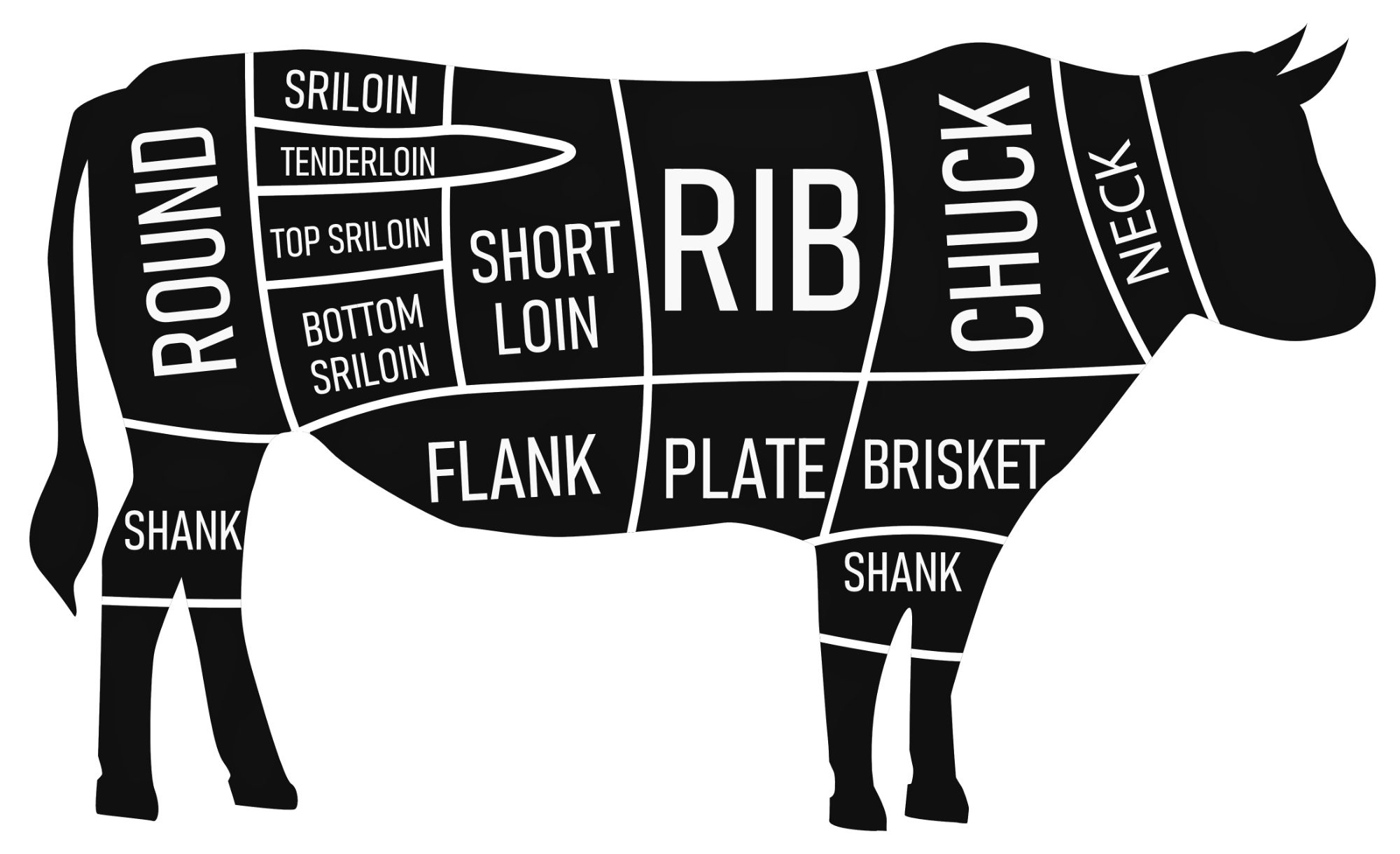Navigating the World of Beef Cuts: An In-Depth Guide
Understanding the various cuts of beef is more than just a culinary exercise; it's a way to get the most flavor, texture, and value from a meat that's a staple in many cuisines worldwide. From filet mignon to brisket, each cut has unique characteristics and requires specific cooking techniques to bring out its best. In this publication, we'll explore the different cuts of beef, provide a comprehensive list of each, and guide you through the basic cuts every professional and home cook should be familiar with.
The Anatomy of Beef Cuts
Before diving into the types of beef cuts, it's essential to understand the basic anatomy of a cow. Beef is categorized into primal, sub-primal, and retail cuts. Primal cuts are large sections of meat initially separated from the carcass. These are then broken down into sub-primal cuts, which your local butcher may further slice into the retail cuts you see in the grocery store.
Primal Cuts
- Chuck: Located near the neck and shoulders, chuck is known for its rich flavor but can be a bit tough.
- Rib: This part encompasses the upper back and is home to some of the most tender and pricey cuts.
- Short Loin: Situated along the spine behind the ribs, this section includes the T-bone and tenderloin.
- Sirloin: Found behind the short loin, the sirloin is less tender but is still a popular grilling option.
- Round: This comes from the rear leg and rump of the cow, providing lean but less tender cuts.
- Flank: Located on the cow's side, between the rib and hip, flank is lean and fibrous.
- Short Plate: Situated under the rib, this cut contains some cartilage but is flavorful.
- Brisket: This cut is from the breast or lower chest and is typically used for slow-cooked dishes.
Sub-Primal Cuts
- Top Blade Steak: From the chuck, it’s tender enough to be grilled but usually used for stews.
- Ribeye: From the rib section, this steak is fatty and flavorful.
- T-Bone: This cut from the short loin offers a two-in-one treat—part tenderloin and part New York strip.
- Porterhouse: Also from the short loin, this is a larger version of the T-bone.
- Top Sirloin: A lean, moderately tender steak from the sirloin.
- Eye of Round: From the round, this is lean and often used for roasts or beef jerky.
- Flank Steak: Ideal for grilling and slicing against the grain.
- Skirt Steak: From the short plate, it’s perfect for fajitas or stir-frying.
- Flat Iron Steak: Also from the chuck, this is tender and often used in sandwiches or salads.
- Brisket Flat End: This is leaner than the point and often used for corned beef.
Retail Cuts
- Ribeye Steak: Cut from the rib section, this is a boneless steak with excellent marbling.
- New York Strip: Sliced from the short loin, it's tender and great for grilling.
- Filet Mignon: This comes from the smaller end of the tenderloin and is incredibly tender.
- Top Sirloin Steak: Cut from the top sirloin, it's leaner but still quite tender.
- Tri-Tip: Taken from the bottom sirloin, it’s flavorful and good for grilling or roasting.
- Round Steak: Cut from the round, it’s lean and benefits from slow-cooking.
- Shank: Derived from the legs, it’s best for braising or in soups.
- Skirt Steak: A long, flat cut from the plate that’s great for fajitas.
- Flat Iron Steak: Cut from the shoulder area, this is a tender option suitable for quick cooking.
- Stew Meat: Usually cut from the chuck or round, these are small pieces ideal for slow-cooked dishes like stews.
The Basic Cuts of Beef Every Cook Should Know
Understanding the complex world of beef cuts might be overwhelming, so here are the basic cuts every professional and home cook should know:
- Ribeye Steak: For those who love a tender and juicy steak.
- T-Bone: Offers the best of both worlds, with a tenderloin and a New York strip.
- Sirloin: Less expensive than other cuts but still delivers on flavor.
- Round Steaks: Good for slow-cooking and roasting.
- Flank Steak: Excellent for quick grilling and very flavorful.
- Brisket: Ideal for slow-cooked meals like barbecues and stews.
For an in-depth exploration of the basics of beef cuts, we recommend visiting the Certified Angus Beef website at www.certifiedangusbeef.com/cuts/.
How to Choose the Best Cuts
- Marbling: Look for cuts with good fat distribution, as this enhances flavor and tenderness.
- Color: A bright, cherry-red color indicates a fresh cut.
- Texture: The meat should be firm to the touch.
- Packaging: Ensure the packaging is tight with no punctures to maintain the meat's integrity.
Cooking Techniques by Cut
Once you've navigated the intricacies of beef cuts and chosen the perfect one for your dish, the next step is to cook it to perfection. Cooking techniques can vary significantly depending on the cut, as each has its own unique properties that are enhanced by specific methods.
- Chuck: Slow-cooking methods like braising work best.
- Rib: Grilling or broiling will bring out the best flavors.
- Short Loin and Sirloin: Suited for high-heat, quick-cooking methods.
- Round: Slow cooking or roasting is advised.
- Flank and Short Plate: Ideal for quick grilling or stir-frying.
- Brisket: Best when slow-cooked or smoked.
In Conclusion
Knowing your way around the different cuts of beef can enhance your culinary adventures, making it easier to select the perfect cut for any occasion. With this comprehensive guide, you're now equipped to make informed choices that will elevate your next meal, whether you're grilling, roasting, or slow-cooking.■
—End of Information—
The information presented in this publication may be updated periodically.
About This Publication
The distraction-free information presented in this publication was prepared and published by ViewMoreInfo.com. It was developed for an online audience with AI support to deliver a thorough and accurate understanding of the topic explored.
Contact Information
For inquiries, send a message to the postal or email address below.
ViewMoreInfo.com
41 Crossroads Plaza #200
West Hartford, CT 06117
span-e

